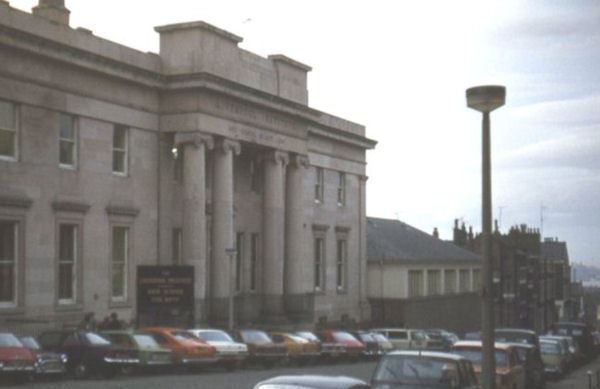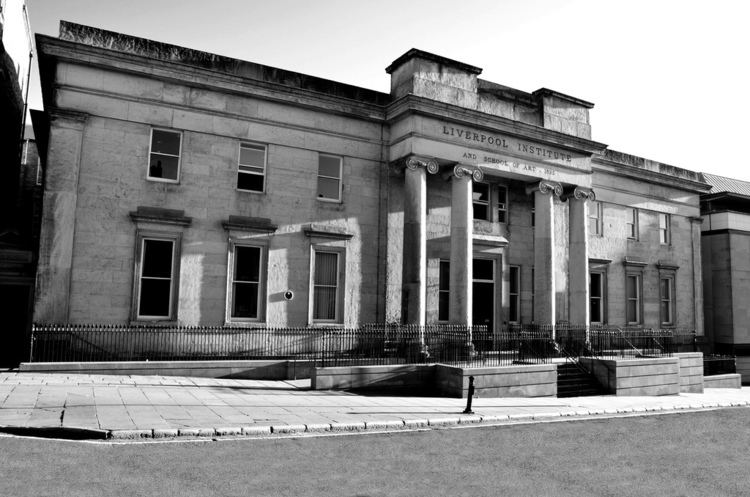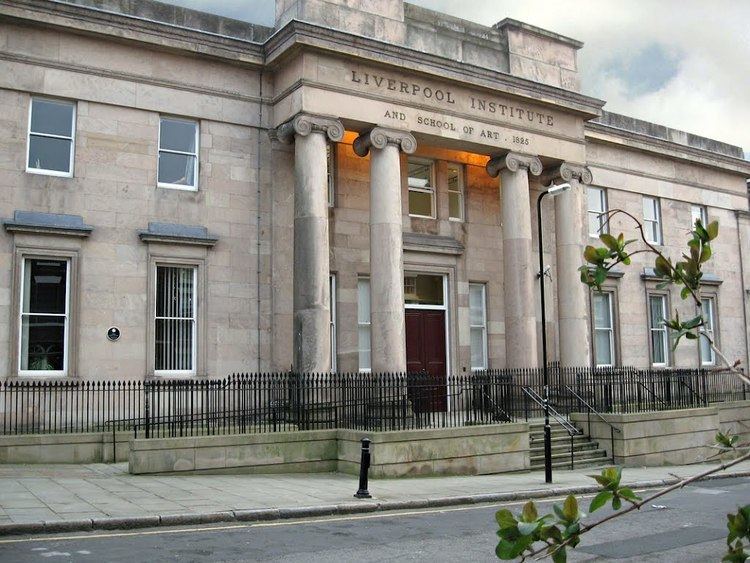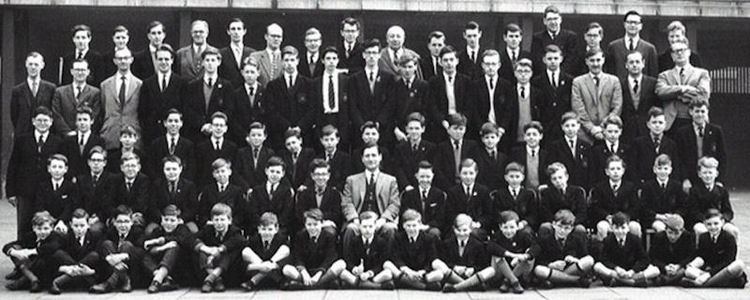Established 1825 Type Grammar school Ages 11–18 Construction started 1825 | Closed 1985 Gender Boys Town or city Liverpool Founded 1825 | |
 | ||
Location LiverpoolMerseysideEngland | ||
The Liverpool Institute High School for Boys was an all-boys grammar school in the English port city of Liverpool.
Contents
- School history in brief
- Closure of the school
- Art school
- Liverpool Institute and music
- Notable former pupils
- 19th century
- 20th century
- References

The school had its origins in 1825 but occupied different premises while the money was found to build a dedicated building on Mount Street. The Institute was first known as the Liverpool Mechanics' School of Arts. In 1832 the name was shortened to the Liverpool Mechanics' Institution. The facade of the listed building, the entrance hall and modified school hall remain after substantial internal reconstruction was completed in the early 1990s.

School history in brief

Its initial primary purpose as a Mechanics' Institute (one of many established about this time throughout the country) was to provide educational opportunities, mainly through evening classes, for working men. Lectures for the general public were also provided of wide interest covering topics ranging from Arctic exploration to Shakespeare and philosophy. Luminaries like Charles Dickens, Anthony Trollope and Ralph Waldo Emerson delivered talks and readings in the main lecture hall (now the architecturally restructured Sir Paul McCartney Auditorium of LIPA).

By 1840 the Institution offered evening classes, lectures, a library and a boys' lower and upper school. By the 1850s a formal art school was evolving from the evening classes and in 1856 this diversity was recognised by another name change – The Liverpool Institute and School of Arts.
A girls' school was founded and opened in 1844 under the name Liverpool Institute High School for Girls. It was housed in a merchant's mansion across the street from the boys' school in Blackburne House provided by the generosity of George Holt and which was later (1872) donated to the school by his family in his memory. The school was one of the first which was open to the public in the country established exclusively for the education of girls.
In 1905 the Liverpool City Council took over the management of the secondary schools when the LI Board of Governors presented the school and assets to the City. From then until its closure in 1985, the school was formally known as The Liverpool Institute High School for Boys or more familiarly as The Institute or The Inny to its pupils.
It was an English grammar school for boys ages 11 to 18 with an excellent academic reputation built up over more than a century. Its list of scholarships and places at Oxford University and Cambridge University runs to some 300 names – in addition to distinctions gained at the University of Liverpool and at many other prominent British universities. The school was a true measure of Liverpool's intellectual capital and its old boys could and can be found in later life in many fields of professional distinction including the law, the Church, armed forces, politics, academia, government and colonial administration as well as in trade and commerce.
Closure of the school
The school went into decline in the mid-1960s with the introduction of comprehensive education in Liverpool and was closed by the city council in 1985 after two decades of contention, political dispute and very little upkeep of the building fabric. The Labour Party nationally – see Anthony Crosland's Circular of September 1965 required that Local Authorities bring forward schemes for comprehensive secondary education. As grammar school pupils were selected by examination at age 11, there was a long-standing push towards 'comprehensive schools' (as non-selective schools were known) from that party when it took majority control of the City Council in 1983. Demand for secondary school places in the City had also dropped precipitously and there was a huge oversupply of school space as Liverpool's population contracted during the severe economic recession of the early 1980s.
The Deputy Leader of the Labour (Militant) Group on Council at the time was a former LI schoolboy Derek Hatton who had left without academic distinction in 1964 and with strong feelings of dislike towards the school. However the man who was Chair of the Educational Committee at the time of the decision to close the school was Dominic Brady.
After closure, the building stood empty and neglected, the roof leaking and the walls crumbling. In 1987 it was announced that the LI Trust (under control of Liverpool Council's Education Department) would grant use of the building and site to a new educational establishment. Paul McCartney had returned to his old school when with Wings he had played a concert at the Royal Court Theatre, Liverpool in 1979. After the school's closure in 1985, McCartney returned one night to reminisce about his school days, while he was writing his 'Liverpool Oratorio'. This visit is captured in 'Echoes'; a DVD which accompanies the Liverpool Oratoria box set. McCartney was determined to save the building somehow and during a conversation with Sir George Martin, the idea of a 'fame school' emerged since Martin was helping Mark Featherstone-Witty start a London secondary school with an innovative curriculum. McCartney and Featherstone-Witty joined forces to create the Liverpool Institute for Performing Arts (LIPA). The new company took over the Liverpool Institute Trust established in 1905.
The building was rebuilt (entirely in parts) behind its old facade and re-opened in 1996 under LIPA's name. This new institute is currently affiliated with LJMU and is no longer a Liverpool secondary school.
Art school
The city's Art College had its origins as part of the Liverpool Institute. In 1883 a new building housing the School of Art was opened around the corner on Hope Street, adjacent to the principal building housing the High School on Mount Street. The Art College by which it was later known, took in talented students often without formal academic credentials (e.g. John Lennon) and the College eventually became one of the four constituent parts of the Liverpool Polytechnic in 1970 and later in 1992 Liverpool John Moores University (LJMU) with the School of Art and Design being housed in the Art and Design Academy.
Liverpool Institute and music
Music and musical performances were a constant theme throughout the life of the school and the Mount St. building. Annual school Speech Day concerts (held in the fine acoustics of Philharmonic Hall, Liverpool), choirs, the organ, piano, music classes and the singing of daily devotional hymns have echoed around its walls for 170 years and continue to do so at LIPA:
Notable former pupils
|Paul McCartney |- |John Lennon
